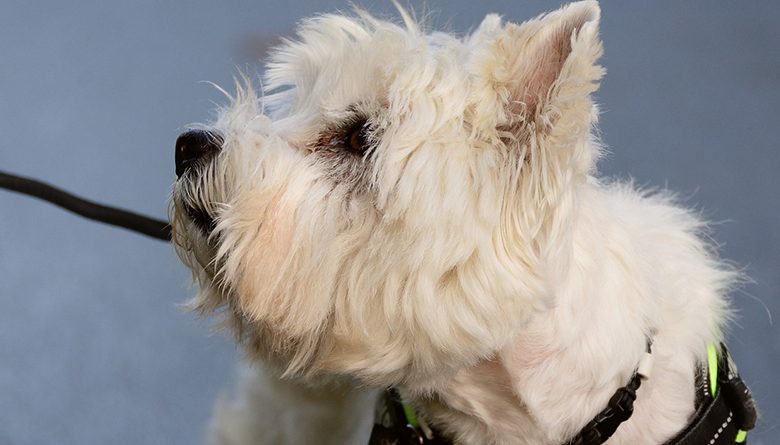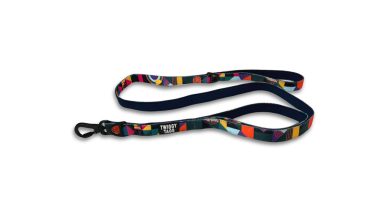Which one will you choose?
If only I had a pound for every time I was asked the question of collar versus harness I would be relaxing on a desert island by now.
When I first owned dogs, around 35 years ago, we always used collars. Just plain leather buckle collars, which didn’t constrict and my dogs didn’t have any respiratory problems. Most importantly I have always trained my dogs not to pull!
Collars may be fixed, semi choke, martingale which are popular with sighthound owners and sighthounds often have thick muscular necks but relatively small heads.
Comfortable or Constricting?
Some collars are intentionally designed to constrict or cause discomfort when a dog pulls, as a means of training. Choke chains, prong collars and electric shock collars would come under this bracket. The use of electric shock collars is banned in Wales.
So immediately I see how owners could have a fair bit of negativity towards the use of collars. In part this would be to the inappropriate use of collars as in collar corrections.
I’m sure we have all seen dogs who pull against their lead, often choking or wheezing, eyes red and bulging and usually panting hard. These dogs have not been trained to walk on a loose lead!
So, just as some collars are intentionally designed to constrict or cause discomfort when a dog pulls, as a means of training so are some harnesses. Harnesses that tighten around the front legs or the midriff if the dog pulls or even pull dogs off balance due to the position of the point of attachment can be aversive.
Health issues
I would never advise using a collar with any of the brachycephalic breeds due to often already compromised breathing, Yorkshire Terriers due to their predisposition to collapsing tracheas, Daxis due to the possibility of spinal issues and Dobermanns due to the condition Cervical Spondylomyelopathy (CSM), often known as Wobblers Syndrome or with any dog that is a hard puller.
Harnesses that don’t fit properly and rub and chaff or are made of abrasive materials will cause a dog discomfort. Some harnesses with a chest strap may impede a dog’s movement.
If you think of the forelimbs moving like an inverted pendulum anything that prevents this movement may lead to physical issues. We have seen dogs lame on the rear quarters due to such harnesses, where the dog is trying to compensate for the forequarters restricted movement.
Harnesses for car travel and some dog sports such as Cani X and bikejoring, sled dogs etc are specialist harnesses, specifically designed for their purpose and they have to be fit for function.
We do like the escape proof harnesses with an extra strap around the middle. These are advisable for nervous, imported dogs as there are way too may who escape and can’t be caught.
Research published on Pubmed.gov looked at the effect on Intraocular Pressure (IOP) from dogs pulling against a collar or a harness. Intraocular pressure increased significantly from baseline when pressure was applied via a collar but not via a harness.
One of the reasons cited for using harnesses with strong pullers rather than collars is the position of the thyroid gland and neighbouring salivary glands which may be injured by trauma and sudden pressure forces. So, there may be potential for contributing to the development of thyroid disease, particularly in those breeds genetically predisposed by using collars.
We like Y shaped harnesses, fleece lined, ideally, especially for fine coated dogs. We like the modular harness that allows owners to just purchase segments as the dog grows rather than having to replace the whole harness.
I personally find that changing to a new piece of equipment at the same time as beginning an intense period of training loose lead walking can sometimes help. Dogs get used to feeling the restrictions of whatever was previously used, and a new piece of equipment can give owners a fresh start to master this skill.
Ideally owners would do some research. Ask around, what is my chosen breed predisposed to medically, does my dog pull, have a look at different collars and harnesses, measure your dog, can the collar or harness be washed are all things I tend to look at.
Please ensure your dog wears an ID tag also! Our dogs are at the mercy of the choices we make for them, so choose well!






